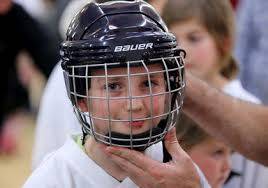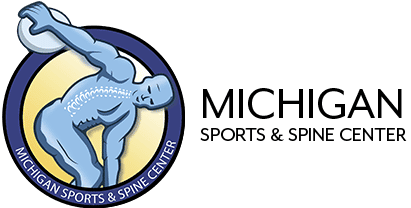Safety of Hockey Helmets Questioned – Are Kids Safe?

As many of you may know, we are actively working with a non-profit organization that is trying to reduce injuries in hockey players, the Look-Up Line Safety Program. Dr. Jeff S. Pierce is serving a Chief Medical Officer in the Midwest Region for this program. It is important to share this information and thanks to Michigan Hockey Now for covering these types of stories and keeping hockey families informed of safety information.
USA Hockey issued a statement to its registered members today in response to a Virginia Tech study that questioned the safety level of hockey helmets in today’s game.
You see can see the results from that helmet study in MiHockey’s article published earlier this week. Here is what USA Hockey sent out today, in its entirety:
Virginia Tech recently released a five-star rating system for hockey helmets. USA Hockey has reviewed the findings and below is commentary from Dr. Michael Stuart to help guide parents, players, coaches and officials. Stuart, from the Mayo Clinic, is USA Hockey’s chief medical and safety officer.
Comments on
Hockey STAR: A Methodology for Assessing the Biomechanical Performance of Hockey Helmets1Michael J. Stuart MD
USA Hockey Chief Medical and Safety Officer
The Hockey STAR rating does not prove if a specific helmet will or will not prevent or even reduce the risk of concussion if worn by a hockey player.The contention that the current hockey helmet has limited ability to prevent a concussion is not a new concept. Numerous experts and the Ice Hockey Summit: Action on Concussion have stated that a hockey helmet is effective for reducing the risk of skull fracture, but not concussion.2 However, improved force dissipation by the hockey helmet is an important goal to help decrease the number and severity of concussions in hockey. A hit to the head is a common mechanism of concussion in hockey, but brain injury can also result from a blow to the face or a blow to the body with resultant force transmission to the head. Therefore, an important element of risk reduction for concussion in hockey is to decrease the frequency of hits to the head and unanticipated hits to the body.3 This strategy will help to prevent concussion, irrespective of hockey helmet characteristics and effectiveness.
Concussion is a growing concern for athletes in multiple sports, including ice hockey. The authors of the Virginia Tech study assert that the risk of concussion is higher in hockey than football, but this statement is not uniformly supported by the literature. A descriptive epidemiology study of United States high schools for 20 sports during 2008-2010 found that football had the highest concussion rate (6.4), followed by boys’ ice hockey (5.4) and boys’ lacrosse (4.0).4
The Hockey STAR evaluation system was designed as a quantitative measure of the ability of individual hockey helmets to reduce the risk of concussion.1 The methodology includes the application of helmet impact testing in the laboratory setting to the on-ice experience. The ability for this system to predict brain injury assumes 1) the recorded linear and rotational accelerations measured by the pendulum and head form truly replicate the actual forces experienced by the brain of a hockey player and 2) the capacity for a helmet to decrease acceleration in the laboratory will actually decrease the risk of concussion when playing the sport.
Concussion risks were multiplied by the exposure statistics gleaned from two published studies for each impact condition in order to determine “incidence values.” The exposure component was assumed from linear and rotational acceleration data collected from hockey players. However, these values may not accurately reflect the actual forces to the brain. There is not a direct correlation between head acceleration and the diagnosis of concussion due to multiple factors: varied injury mechanisms (for example, a blow to the body can cause a concussion regardless of helmet type), individual susceptibility (the concussion threshold is unknown because a wide range of G-forces result in clinical symptoms), along with the fact that the currently available concussion diagnostic tools are largely subjective and have poor sensitivity.
The author’s assumption that a player experiences a mean of 227 head impacts per season was determined by averaging published data from instrumented helmet research in collegiate, Midget and Bantam players. However, other studies do not correlate with this estimation of head impact frequency or magnitude. Male Bantam (age 13–14) players experienced a mean of 140 head impacts over the course of the season with an average linear acceleration of 22G. The majority of impacts were of a relatively low magnitude (linear acceleration less than 30G in 83% and greater the 75G in only 1.7%5). The clinical consequences of repeated head impacts are unknown. Peak accelerations as measured at the surface of the head were 160 to 180% greater from heading a soccer ball than from routine (non-injurious) impacts during hockey or football, respectively.6 In addition, the data used in the Hockey STAR predictions can’t be extrapolated to younger hockey players, alternative hockey environments or other sports.
The aggregated data was used to calculate a Hockey STAR value for each helmet. The contention that “player wearing helmet A would be 44.6% less likely to sustain a concussion than a player wearing helmet B if both players had the same head impact exposure over one season” is predicated on many assumptions. In addition, the ability of the STAR values to estimate both “undiagnosed and diagnosed injuries” has not been validated. There is no data presented in this study to support the rate of undiagnosed concussion or to prove that only 10% of concussions are actually diagnosed in hockey players.
This experiment represents only one methodology for testing hockey helmets. The authors admit: “there are a near-infinite number ways to test a helmet,” which could affect the test results. Therefore, this study does not prove if a specific helmet will or will not prevent or even reduce the risk of concussion if worn by a hockey player.
- Rowson B, Rowson S, Duma SM. Hockey STAR: A Methodology forAssessing the Biomechanical Performance of Hockey Helmets. Annals of Biomedical Engineering (_ 2015) DOI: 10.1007/s10439-015-1278-7.
- Smith AM, Stuart MJ, Greenwald RM, Benson BW, Dodick DW, Emery CA, Finnoff JT, Mihalik JP, Roberts WO, Sullivan CA, Meeuwisse WH. Proceedings from the ice hockey summit on concussion: a call to action. Clin J Sport Med. 2011 Jul;21(4):281-7.
- Smith AM, Stuart MJ et al. Ice Hockey Summit II: Zero Tolerance for Head Hits and Fighting. Curr Sports Med Rep. 2015 Mar-Apr;14(2):135-44. doi: 10.1249
- Marar M1, McIlvain NM, Fields SK, Comstock RD. Epidemiology of concussions among United States high school athletes in 20 sports. Am J Sports Med. 2012 Apr;40(4):747-55.
- Naunheim RS et al. Comparison of impact data in hockey, football, and soccer. J Trauma. 2000 May;48(5):938-41.
- Reed N et al. Measurement of Head Impacts in Youth Ice Hockey. Int J Sports Med 2010; 31: 826 – 833
USA Hockey supports the development of new helmet concepts, materials and designs that hopefully will reduce the risk of concussion.
The Hockey STAR rating allows consumers to compare overall helmet performance between models in the laboratory setting using a specific methodology.
The Hockey STAR rating does not prove if a specific helmet will or will not prevent or even reduce the risk of concussion if worn by a hockey player.
This type of research raises concussion awareness and will hopefully stimulate additional investigations and strategies to improve safety.
- USA Hockey supports a multifaceted approach to improve concussion prevention, diagnosis and management including:
- Concussion education (players, coaches, parents and officials)
- Enforcement of existing rules (major and misconduct for boarding, charging, checking from behind)
- Rule changes (penalty for intentional and unintentional head hits, delaying body checking until age 13, fighting in junior hockey)
- American Development Model (efforts to teach body contact and control skills in a progressive manner)
- Safety programs (Heads Up Don’t Duck, Fair Play, coaching education modules and clinics)
- Equipment modifications (helmets, elbow pads, chinstraps, mouth guard)
ABOUT MICHIGAN SPORTS & SPINE CENTER:
We’re innovative leaders utilizing cutting-edge technologies such as musculoskeletal ultrasounds, PRP, stem cell treatment, and other innovative procedures. Michigan Sports & Spine Center is committed to resolving your pain, not simply masking it. We treat the whole body, not just the injury, and perform preventative treatment so your injury doesn’t come back. Our studies prove that Michigan Sports & Spine Center has patient success rates much higher than the national average. We treat everyone from high-profile athletes to your neighbor next door. Our primary focus is getting our patients back into the game of life!
